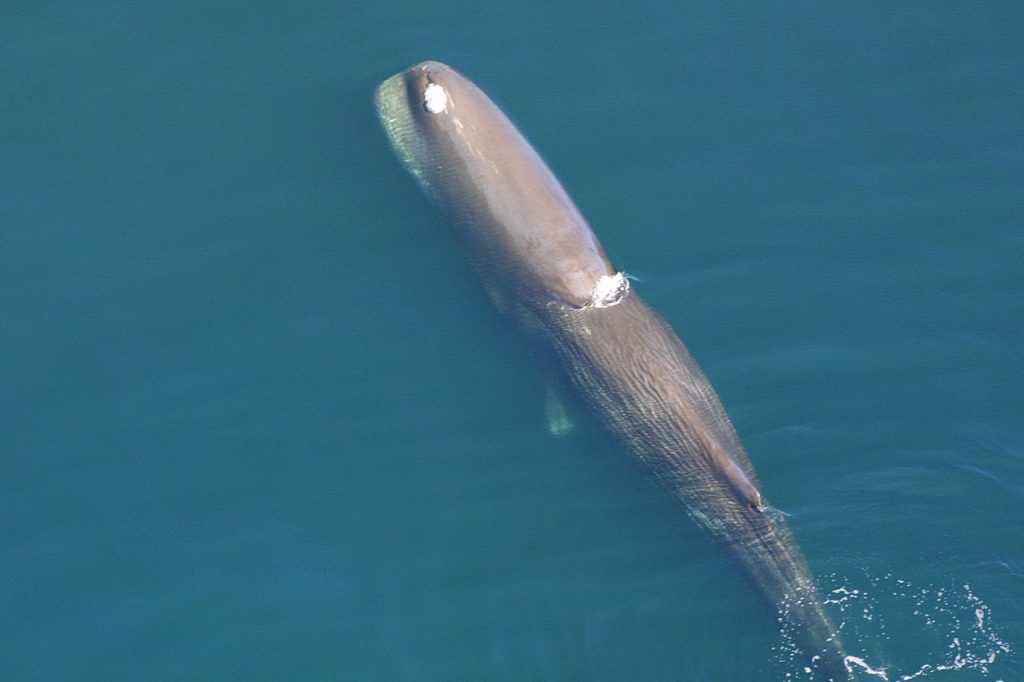
STATUS
Federal: Endangered
POPULATION TREND
+ Increasing
RESTORATION
Difficult
FAMILY
Physeteroidea
RANGE
Nearly global
Appearance
Sperm whales are the largest toothed predators on the planet (and also have the largest brains!). Males are larger than females and can reach 20 m in length. The head of the sperm whale is extremely large and accounts for about one-third of its total body length. Its blowhole is angled, causing the blow to spout to the left.
Habitat & Behavior
The sperm whale can dive deeper than 2,250 meters in search of squid, rays, sharks, and bony fish. They are often spotted in pods (groups) of 5 to 20 individuals. Pods include females and their young, while males may roam solo or move from pod to pod.
Threats
There are only about 2,800 sperm whales along the west coast of California. The primary threats to sperm whales are entanglement in fishing nets and collisions with ships. There is increasing concern that ingestion of marine debris such as plastics, ocean noise, and chemical pollution may significantly impact sperm whale populations in the future.
Conservation
International conventions have had a positive impact on sperm whale populations. Estimates of global sperm whale populations are between 300,000 and 450,000 individuals. Sightings, as well as new methods of identification such as eDNA (in which small water samples are analyzed for the presence of traces of whale DNA), allow scientists to study distributions and population trends.
About this map
This map is based on summer and fall sightings of sperm whales. The sightings were recorded during ship surveys and used to build a habitat model that shows approximate whale density, or the number of individual animals that scientists have predicted should occur per square kilometer of ocean. Only the Western U.S. portion of the whale’s distribution is shown here. The model was developed by Dr. Elizabeth Becker and her team (a link to her paper and the data is under Data Sources below).
Where can you spot it?
Sperm whales can be difficult to spot because they dive so deep and travel long distances underwater, but the best time to see the sperm whales in Los Angeles is during the spring and summer.